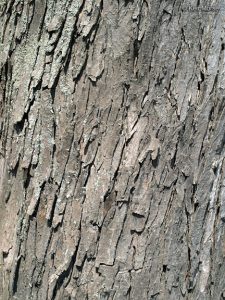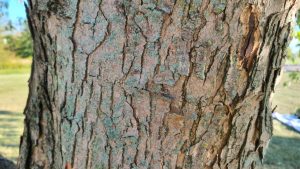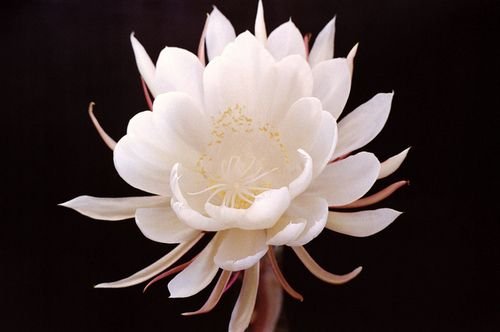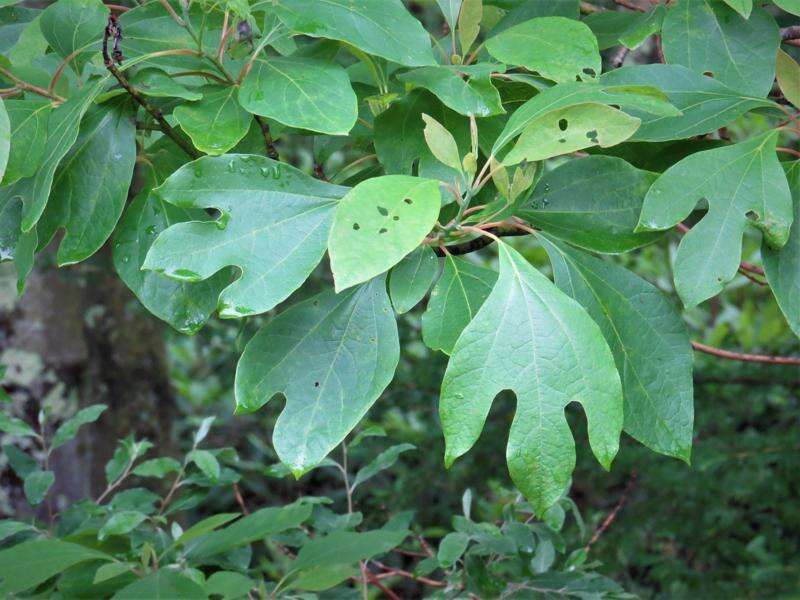Pear Tree Bark
Welcome to Arborist Heights, your reliable source for expert tree care information and services. In this detailed lesson, we’ll delve into the fascinating world of pear tree bark, which is an essential component of tree health and vitality. Our trained arborists are here to help you understand, care for, and protect the bark of your pear trees. Our dedication to ensuring the health and longevity of your pear trees extends from recognizing typical bark issues to adopting effective care measures. Let Arborist Heights help you preserve your trees’ beauty and strength.
Pear tree bark
Importance of pear tree bark
Healthy pear tree bark is crucial to the tree’s overall health and lifespan. It acts as a protective barrier, safeguarding the inner layers from external hazards, including pests, illnesses, and extreme weather. Furthermore, the bark transports nutrients, water, and carbohydrates throughout the tree, promoting growth and development. A healthy bark also aids photosynthesis by giving structural support to leaves and branches. Furthermore, the appearance and texture of the bark might reflect the tree’s health, making it a useful diagnostic tool for detecting underlying problems. Pear tree owners can ensure optimal development, fruit output, and resilience against environmental stressors by taking proper care and preventive actions to protect the bark’s integrity.
A common disease affecting pear tree bark
Pear trees are vulnerable to several common diseases that can damage their bark. The bacterium Erwinia amylovora causes fire blight, a common disease that causes darker, sunken lesions on the bark. Pear canker, which appears as sunken patches with cracked or discolored bark, is an important hazard. Phytophthora root rot can also infect the base of the tree, causing the bark to brown and rot. Other diseases, such as bacterial canker and anthracnose, can also harm the bark, causing lesions, cankers, and general decline. Proper sanitation, pruning, and disease-resistant cultivars are required to manage these diseases and maintain the health of pear tree bark. Regular inspections and early intervention are critical for preventing disease spread and keeping pear trees healthy.
Signs of bark damage in pear trees
Signs of bark damage in pear trees vary depending on the cause and intensity of the injury. Common indicators include the following:
- Cracks or breaks in the bark.
- There is discoloration, such as darkened or sunken spots.
- Peeling or flaking bark.
- The presence of cankers or lesions.
- Excess gummosis is a condition in which sap seeps from the bark.
- There are mechanical injuries, such as those resulting from a lawnmower or trimmer.
- Insect infestations, such as borers, leave entry holes or tunnels.
- On the bark surface, fungal fruiting bodies or mold may be present.
It is critical to monitor pear trees regularly for signs of bark damage since early diagnosis can help avoid further degradation and improve tree health. Prompt intervention, like pruning, wound dressing, or pest management, may be required to repair the damage and reduce potential threats to the tree’s health.
How to protect pear tree bark in the winter?
Protecting pear tree bark in winter is critical to preventing damage from cold temperatures, frost, and moisture. Here are some ways to protect your pear tree bark throughout the winter months:
Apply a layer of mulch around the tree’s base to insulate the roots and protect them from temperature swings.
Wrap the trunk in tree wrap or burlap to provide insulation and protect against sunscald and frost fractures.
Avoid pruning during the winter because cuts are more likely to cause harm and illness.
Water the tree thoroughly before the ground freezes to guarantee proper moisture levels for winter dormancy.
Remove any dead or diseased branches before winter to avoid disease spread and minimize potential hazards.
Monitor the tree regularly for symptoms of injury or stress, such as bark splitting or discoloration, and take action as needed.
Implementing these procedures can help protect your pear tree bark while promoting its health and vitality throughout the winter.
Pruning Techniques for Maintaining Bark Health
Pruning is essential for maintaining the health of pear trees’ bark. Here are some pruning procedures that can help improve the health and vitality of your tree’s bark:
Selective pruning entails carefully selecting which branches to prune, with the goal of initially eliminating dead, damaged, or diseased branches. This reduces the spread of diseases and allows the tree to devote more energy to healthy bark.
Clean Cuts: Make clean cuts at a slight angle outside the branch collar, the swelling area where the branch connects to the trunk. Avoid leaving stubs or making jagged cuts, as these can slow healing and increase the risk of infection.
Prune pear trees during their dormant season, preferably in late winter or early spring, before new growth begins. This permits the tree to recuperate faster and lowers the danger of disease spreading.
Avoid over-pruning: Pruning too much might stress the tree and harm the bark’s health. Aim for a balanced canopy that retains the tree’s original shape.
Using these pruning procedures helps maintain the health and integrity of your pear tree’s bark, ensuring its long-term viability and productivity.
Natural Remedies for Treating Bark Issues in Pear Trees
Consider the following natural solutions for pear tree bark issues:
Using neem oil can help fight fungal infections and pests that might harm the bark. Dilute it according to the directions, and apply it to the affected areas.
Copper Fungicide, A natural copper fungicide, such as cankers on pear tree bark, can effectively treat fungal diseases. Apply it exactly as recommended on the product label.
Proper pruning removes diseased or damaged bark, resulting in healthy growth. To prevent pathogen transmission, disinfect pruning instruments between cuts.
Compost Tea: Spraying the tree with compost tea can improve its overall health and resistance to illnesses, including bark concerns. It promotes the development of beneficial microorganisms and nutrients in the soil.
Mulching: Mulching around the tree’s base helps conserve moisture, controls soil temperature, and reduces weed growth, decreasing stress on the tree and promoting bark regeneration.
Regular examination and maintenance, together with these natural therapies, can help restore and preserve the health of pear tree bark.
Bark Regeneration: Tips for Encouraging Healing
Bark regeneration is critical to the overall health of trees. Here are some ways to encourage healing:
Clean Wounds: Remove any dirt or damaged bark from the wound area to expose healthy tissue and promote healing.
Proper pruning: Make clean cuts along jagged or torn bark margins to facilitate smooth healing and prevent future harm.
Protective measures include applying tree wound dressings or sealants to larger wounds to reduce moisture loss and repel pests and infections.
Optimal conditions: Ensure that trees receive enough water, nutrients, and sunlight to promote rapid growth and recovery.
Avoid Stress: Reduce any additional stress on the tree, such as excessive pruning or mechanical damage, which can hinder healing.
Patience: Allow time for natural healing processes to occur, as bark regeneration is a gradual but important element of tree health.
Follow these suggestions to promote good bark regeneration and improve the overall health of your trees.
Related Posts:
The bark-grafting methods are used for the propagation of pears.
Bark grafting is a popular way of propagating pear plants. Here are two popular bark-grafting techniques:
Whip and Tongue Grafting: This procedure involves attaching a scion (a piece of the desired pear tree variety) to a rootstock using matching diagonal cuts, resulting in a tongue on each piece. We then assemble the scion and rootstock to align the cambium layers for a successful graft.
Cleft Grafting: We form a vertical slit in the rootstock bark and insert the scion, which has a wedge-shaped incision at the base, into the cleft. Larger rootstocks benefit greatly from this technique, which enables the grafting of numerous scions onto a single rootstock.
All procedures require meticulous preparation, precise alignment of cambium layers, and securing the graft with grafting tape or wax to promote effective union. Keep grafts moist and covered until they have completely healed and started to develop.
How Environmental Factors Influence the Health of Pear Tree Bark
Environmental elements play an important role in determining the health of pear tree bark.
Extreme temperatures, particularly frost in the winter, can cause bark damage, resulting in cracks or splits that expose the interior layers to diseases and pests.
Moisture: Excessive moisture or prolonged wet periods can encourage the formation of fungal infections, such as cankers, which can infect and weaken the bark.
Poor air quality: Pollution and poor air quality can deteriorate pear tree bark, making it more vulnerable to illnesses and pest infestations.
Sunlight Exposure: Intense sunlight, especially when combined with high temperatures, can induce sunscald or sunburn on the bark, resulting in tissue damage and infection sensitivity.
Poor soil drainage or nutrient deficits can stress the tree, reducing its bark health and making it more susceptible to disease.
Maintaining appropriate environmental conditions, such as correct irrigation, mulching, and soil management, is critical for promoting healthy pear bark. Regular monitoring and prompt intervention can help lessen the detrimental effects of environmental factors.
FAQS
What should I do if I discover cracks or splits in my pear tree bark?
Cracks or splits in pear bark may indicate environmental stress or disease. You must pay close attention to the affected areas. If the damage is significant, seek advice from a certified arborist regarding treatment possibilities.
Is it common for my pear tree bark to turn color?
Some color variations in pear tree bark are natural, especially as the tree ages. However, abrupt or dramatic changes in bark color may signal underlying health issues, including illness or nutrient deficits. Keep a watchful eye on the tree and seek advice from an expert if you have any concerns.
Can I use commercial bark treatments on my pear tree?
Yes, commercial treatments, such as fungicides and insecticides, are available to treat pear tree bark concerns. When using these goods, always strictly adhere to the manufacturer’s directions.
Conclusion
To summarize, the condition of the pear tree’s bark is critical to the tree’s overall survival. Environmental variables, pests, illnesses, and inappropriate care can all affect bark health. Regular inspections, timely problem resolution, and proper management procedures are critical for maintaining the integrity of pear tree bark and ensuring the tree’s longevity.




